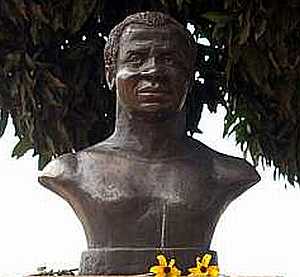More than the land, the Brazilian people themselves gave me the thousand and one insights I needed. Try to imagine a stranger coming to you and telling you he is going to write a novel about the entire history of Brazil. Five hundred years! A crackpot! Louco!
Bemused some were but with one solitary exception, a fiery young man of Manaus who flew into a rage and said an estrangeiro had no right to "steal Brazil's past,” save for this lone objector, I'd unstinting help and support from hundreds of people, some giving me days of their time, some only precious moments. An unnamed peasant woman standing next to me in a bus queue in Brasília and asking that I buy an orange for her sick child: I realized later that the orange was all the pair had for nourishment on a twenty-six hour bus trip.
I kept my daily journal during my trip and filled twenty notebooks. I pored over dozens of maps, paintings, photographs, absorbing and interpreting this mass of information as I went along. I was not bound by the same constraints as the historian, my book is a work of the imagination, but I was under an obligation to get the facts right. Foremost was an overriding desire to write a book that was accurate, balanced and avoided stereotypical images and over-simplifications that often mar the works of outsiders attempting popular fiction about Latin America.
Where my interpretations revise commonly-held views, I arrived at my conclusions only after the most critical thought.
My view of Brazilian slavery, for example, particularly the early centuries is harsher than what was usually portrayed.
I did not study Brazilian slavery in isolation but looked at the Portuguese record in Mozambique and Angola, particularly the degradation of the Congo; the more I thought about it, the less I believed that the harsh Portuguese slaver in Africa could miraculously be transformed into a paragon in Santa Cruz. Palmares was the quilombo that made "headlines,” but how many others were there? Tens of thousands of runaway slaves do not suggest a benign regime of bondage.
 |
| "Ganga Zumba" of Palmares |
I asked myself time and again, and not only with slavery: through whose eyes was the past beheld? Almost never in a colonial situation does one find anything but the official story neatly penned for bureaucrats thousands of miles away.
I'm no “frock coat” devoted to the literary salon. I do not write staring above the heads of the mass of people. I like to get my hands dirty “to recreate history,” as one reviewer of Brasil said, “almost entirely at ground level.”
While generations of fictitious Cavalcantis and Silvas populate my landscape, I took great pains to bring to center stage a host of characters drawn from the masses. Affonso Ribeiro and his wild clan; Nhungaza of Palmares and his grandson, Black Peter; Antonio Paciência, the mulatto, slave, voluntário in the Paraguayan War, so-called "fanatic" at Canudos, above all, “Antonio Paciencia-Brasileiro!” A few of the many as dear and vital to me as the great men of the earth in Brazil, past and present.
In the end, one writer's search for the soul of Brazil -- an honest and sincere attempt to understand "the Brazilian thing."




No comments:
Post a Comment